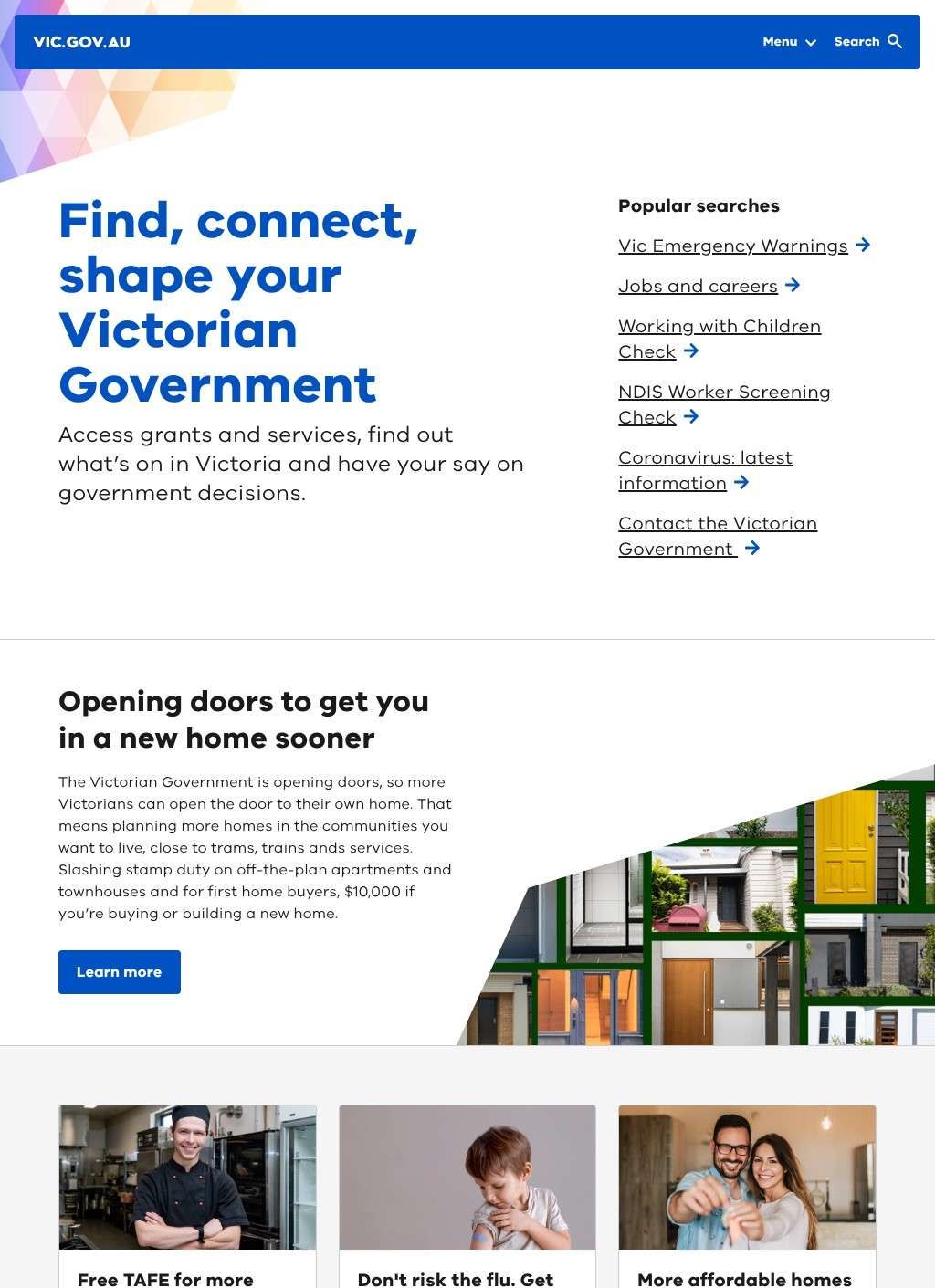The Victorian Government website serves as the comprehensive digital interface between Australia's second-largest state government and its diverse population of over 6.7 million residents, operating within a complex federal system while addressing the unique challenges of governing a state that includes both Australia's second-largest city and vast rural regions. Victoria's governmental architecture reflects its status as Australia's most densely populated state, with Melbourne's metropolitan dominance balanced against regional centers like Geelong, Ballarat, and Bendigo that maintain distinct identities and economic bases. The website must serve everyone from inner-city professionals to remote farming communities, creating service delivery challenges that show up throughout its comprehensive offerings.
The platform's structure acknowledges Victoria's role as Australia's economic powerhouse, with services organized around the state's diverse economy spanning finance, manufacturing, agriculture, tourism, and emerging technology sectors. Business development services receive substantial attention, reflecting the government's efforts to maintain Victoria's position as Australia's job creation leader while supporting innovation in sectors like biotechnology, renewable energy, and advanced manufacturing. The state's Free TAFE program represents major workforce development initiatives designed to address skills shortages while providing career pathways for Victorians seeking new opportunities.
Health services information reflects Victoria's sophisticated medical system, centered around major teaching hospitals in Melbourne but extending to regional health networks that serve communities across the state. The website provides information about public hospital services, mental health programs, and preventive health initiatives including seasonal vaccination campaigns. During health emergencies, this platform becomes central to public health communication, as demonstrated during the COVID-19 pandemic when Victoria implemented some of Australia's most stringent public health measures.
Education services cover the full spectrum from early childhood programs to tertiary education partnerships, with particular attention to maintaining educational equity across metropolitan and regional areas. The website provides information about public school systems, specialist programs, and support services that address the diverse needs of Victoria's multicultural population. Transport services for rural students, distance education programs, and vocational training aligned with state economic priorities receive detailed coverage.
Emergency services coordination reflects Victoria's exposure to natural disasters including bushfires, flooding, and severe weather events that can affect large portions of the state simultaneously. The website includes real-time warning systems, preparedness information, and response protocols tailored to Victorian conditions. The state's experience with major disasters like Black Friday, Black Saturday, and Black Summer bushfires influences emergency planning and community education programs that acknowledge both rural fire risks and urban emergency challenges.
Environmental and sustainability initiatives receive extensive coverage, reflecting both Victoria's environmental heritage and its leadership in renewable energy transition. The website includes information about renewable energy projects, environmental protection programs, and climate adaptation strategies. Victoria's commitment to carbon neutrality by 2045 shows up in dedicated resources about offshore wind developments, battery storage projects, and sustainable transport initiatives that position the state as a clean energy leader.
Transport and infrastructure information covers Melbourne's extensive public transport network alongside regional connectivity projects essential for economic development. The website includes information about major infrastructure projects like the Metro Tunnel, level crossing removals, and highway upgrades that address both urban congestion and regional accessibility. The state's significant investment in transport infrastructure reflects recognition that connectivity drives both economic development and quality of life.
Cultural and heritage services reflect Victoria's rich history and vibrant contemporary arts scene, with information about heritage site protection, arts funding programs, and cultural institutions that serve both local communities and international visitors. Melbourne's UNESCO City of Literature designation and the state's music, theater, and visual arts scenes receive government support through various programs detailed on the website.
Community services address both urban needs and the particular challenges of supporting diverse regional communities. The website includes information about family services, aged care coordination, and multicultural support programs that serve Victoria's highly diverse population. Housing initiatives receive particular attention, reflecting affordability challenges in Melbourne while addressing different needs in regional areas.
The website includes comprehensive contact information organized by department and service area, with recognition that Victorians expect responsive government services regardless of their location. Service Victoria centers provide standardized service delivery across the state, while online services continue expanding to reduce travel requirements for regional residents. Digital inclusion programs acknowledge that technological access varies significantly across the state's diverse communities.
Democratic participation features include detailed information about state elections, parliamentary processes, and extensive public consultation opportunities. The website provides access to parliamentary proceedings, government reports, and policy development processes that often generate significant public interest given Victoria's politically engaged population. Budget information, major project updates, and policy consultations reflect the government's commitment to transparency in decision-making processes that affect millions of Victorians.
The platform serves as a crucial communication channel during major events or emergencies, providing authoritative information that combats misinformation while coordinating response efforts across multiple agencies and levels of government. This communication function proved particularly important during the pandemic, major bushfire events, and other situations where accurate, timely information became essential for public safety and community confidence.
